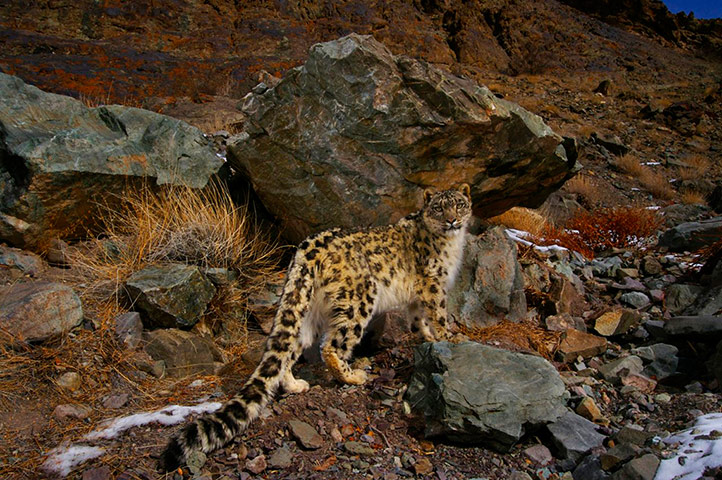Do you look forward to starting your day with the Wildlife Disease News Digest? Consider making a contribution. With your support, we can keep on publishing the Digest for everyone's benefit.
Through the University of Wisconsin Foundation, different giving options are available, including one-time gifts, or annual or monthly pledges. Find one that is right for you here.
We love keeping you informed!
The WDIN Team
Cris Marsh
Megan Hines
Vicki Szewczyk
Dr. Kurt Sladky
TOP STORIES
Migratory birds can spread haemorrhagic fever
A type of haemorrhagic fever (Crimean-Congo) that is prevalent in Africa, Asia, and the Balkans has begun to spread to new areas in southern Europe. Now Swedish researchers have shown that migratory birds carrying ticks are the possible source of contagion.
Researchers have now studied the dissemination mechanisms of this potentially fatal disease. The study is multidisciplinary, with bird experts, tick experts, molecular biologists, virologists, and infectious disease physicians from Uppsala University and Uppsala University Hospital in collaboration with colleagues from the Swedish Institute for Communicable Disease Control, Kalmar and Linköping. Ornithologists and volunteers also helped gather birds.
Science Daily - www.sciencedaily.com
22 Oct 2012
Cited Journal Article
M Lindeborg et al. Migratory Birds, Ticks, and Crimean-Congo Hemorrhagic Fever Virus. Emerging Infectious Diseases, 2012; 18 (12) DOI: 10.3201/eid1812.120718
U.Va. Researchers Find Anthrax Can Grow and Reproduce in Soil
Anthrax has the unexpected ability to grow and reproduce while lurking in soil – increasing the deadly bacteria’s chances to infect cattle and other mammals, researchers at the University of Virginia School of Medicine have discovered.
Until now, experts have widely believed that anthrax spores remain dormant in soil until eaten by cattle, then germinate and cause the deadly disease. But U.Va. researchers have found that the spores can attack a common soil and water amoeba, Acanthamoeba castellanii, turning these single-celled organisms into anthrax incubators.
UVA Today - news.virginia.edu
17 Oct 2012
Antibiotic-Resistant Bugs Go Wild
One of the most notorious and hard-to-treat bacteria in humans has been found in wildlife, according to a new study in the Journal of Wildlife Diseases. The researchers isolated methicillin-resistant Staphylococcus aureus (MRSA) in two rabbits and a shorebird. Wild animals may act as an environmental reservoir for the disease from which humans could get infected.
...Now it appears that even animals in the wild can be infected with MRSA. Researchers led by epidemiologist Tara Smith of the University of Iowa's College of Public Health in Iowa City took samples from 114 animals that came into the Wildlife Care Clinic, which rehabilitates injured or orphaned animals, at Iowa State University in Ames. Seven of the animals, or 6.1%, carried S. aureus that was sensitive to methicillin; these included owls, pigeons, a beaver, a heron, and a squirrel. Three animals, or 2.6%, carried MRSA: two Eastern cottontail rabbits and a lesser yellowlegs, a migratory shorebird. (For comparison's sake: An estimated 1.5% of Americans carry MRSA in their noses.)
Science Now - news.sciencemag.org
18 Oct 2012
JU Adams
Cited Journal Article
SE Wardyn et al. Methicillin-resistant Staphylococcus aureus in Central Iowa Wildlife. J Wildlife Dis, 2012; 48(4):1069-1073. doi:10.7589/2011-10-295
OTHER WILDLIFE HEALTH RELATED NEWS
- 3 birds test positive for West Nile virus in Simi Valley[Simi Valley, California, USA - Map It
 ]
] - Beluga whale observed in Montreal: 400km upstream of normal range [CCWHC healthywildlife.ca blog]
- Sweden's only coral reef at risk of dying
- Scientists seek national wildlife conservation network
- BLUE-GREEN ALGAE NOTICES FOR OCT. 12 [Kansas Dept. of Wildlife, Parks and Tourism]
- Badger cull postponed[England]
- Genetic Patterns of Deep-Sea Coral Provide Insights into Evolution of Marine Life: Patterns Also Shed Light on How Environmental Disturbances Affect Aquatic Organisms
- Biologists record increasing amounts of plastic litter in the Arctic deep sea: Studies confirm that twice as much marine debris is lying on the seabed today compared to 10 years ago
- McVeigh stands by decision to close biosecurity lab [Australia]
 |
| Snow leopard in India's Hemis national park. Photo credit: S Winter/WildPhoto2012/The Guardian |
- White-Nose Syndrome in Bats: Report Signs of Infected Bats
- Bats Still Haunted by Deadly Fungus [USGS Science Features blog]
- Disease blamed for many Indiana deer deaths [Indiana, USA]
- Disease kills 10,400 deer in Michigan, officials say Canadian animals are safe [Michigan, USA and Canada]
- Lafayette College professor studying cause of mad cow, Alzheimer's
- Escaped deer pose risk of spreading disease in Indiana[Indiana, USA]
- Captive deer from CWD-positive farm roaming free [Pennsylvania, USA]
- Rabies cases up in Arkansas [Arkansas, USA]
- Officials study Yosemite workers for clues about hantavirus outbreak [AVMA Aardvarks to Zebras blog]
- The Dog That Was A Canary [Yale Human Animal Medicine blog]
- Webinar to focus on risks of feral hog diseases in Texas [Texas, USA]
- Local Wildlife Is Important in Human Diets in Central Africa, Experts Say
- Planet of the Apes: Viruses use kinship of humans and apes
It Ain't All Bad






No comments:
Post a Comment